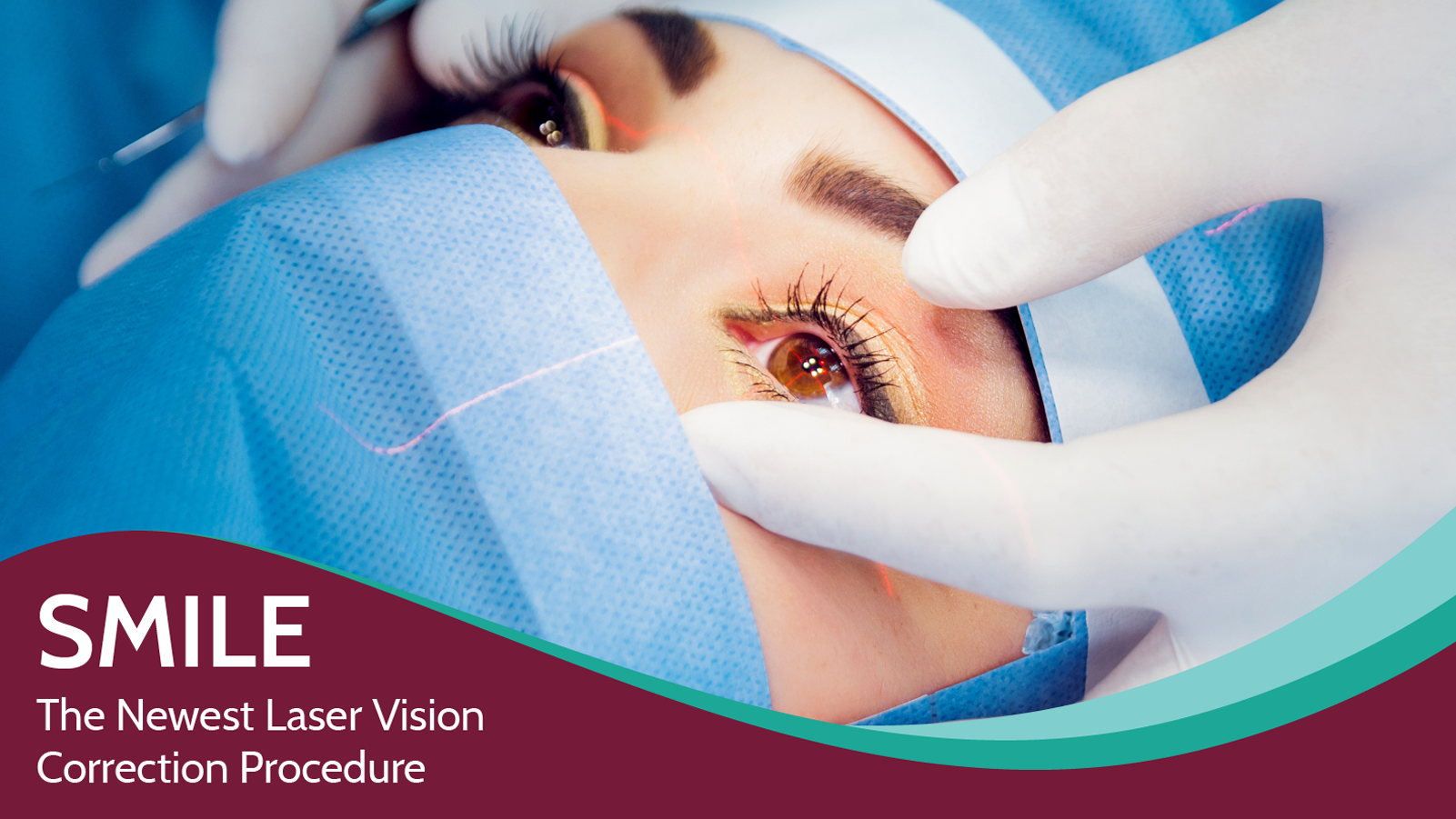
Answering questions about refractive surgery is something that you’ll do over and over again on a daily basis. If you practice in a primary care setting, you’ll likely have at least a few patients every single day that will ask you about laser vision correction and if you think they might be a good candidate for LASIK surgery.
Most patients have a friend or family member who has had LASIK, and they often know the basics of the procedure since it is so widely done. However, you’ll get a patient here and there who has done a little more research and may inquire about the SMILE procedure.
SMILE stands for Small Incision Lenticule Extraction.
Although this surgery isn’t as popular as LASIK at the moment, and many refractive surgeons don’t offer this technology, you should be able to talk to them about fundamental principles of this procedure and how it is different than LASIK surgery.
Candidacy
- SMILE can correct for myopia, astigmatism, or a combination of the two. It is not a treatment option for hyperopia at this time
- LASIK can correct for myopia, hyperopia, and/or astigmatism
- As with LASIK, a detailed eye exam evaluating the corneal topography, corneal thickness, refractive error, and ocular/medical history is necessary to determine if your patient will be a candidate for SMILE
Procedure
- SMILE is a single-step procedure in which a short pulse and fast repetition femtosecond laser system creates a 2-4mm wide incision while at the same time creating a thin lenticule of stromal tissue (takes an average of 23 seconds)
- LASIK uses a two-step technique in which a femtosecond laser is utilized to create a flap of tissue, and an excimer laser is used to ablate a certain amount of tissue depending on the patient’s refractive error
- The surgeon then removes this lenticule through the small incision thereby reshaping the cornea and correcting the patient’s refractive error
Pros of SMILE vs. LASIK
- With SMILE, the more superficial layers of the cornea are virtually unaffected; these are the most important contributors to the cornea’s stability
- This may result in a stronger corneal stroma postoperatively (although one can still develop ectasia with SMILE)
- There is also no chance of flap dislocation with SMILE
- It is also believed that symptoms of dry eye are less with SMILE because the corneal nerves aren’t affected as much as with LASIK surgery
- There are potential optical benefits to SMILE because it involves directly cutting a lenticule vs. some eccentricity to the ablation that occurs when the laser hits peripheral positions in LASIK surgery
- There are fewer variabilities involved with SMILE that can potentially affect the outcome; with LASIK, air quality, temperature, humidity, tears, and BSS irrigation all come into play
Cons of SMILE
- SMILE is more technically difficult than LASIK; this factor, along with the need for a different laser platform means that less refractive surgeons offer this technology
- Because of its complexity, there is a greater chance something can go wrong during surgery, such as retained lenticules that were not fully cut by the laser, or lenticules torn during the extraction process
- Enhancements are not ideal with SMILE; a surgeon will typically do PRK over SMILE which in a sense then counteracts all the potential benefits and reasoning for doing SMILE in the first place (LASIK can be much easier to enhance)
- There can be variability in the SMILE cuts in which the two surfaces don’t completely match up once the lenticule is removed; this often results in delayed visual recovery with SMILE compared to LASIK
- Studies show that femtosecond lasers are not as precise as excimer lasers meaning that there tends to be a greater “wow” factor with LASIK
- SMILE has missed out on some significant advances in technology such as topography-guided ablations that tend to give superior visual results due to the different laser platform
We hope this discussion will help you talk to your patients about all of the available technology out there when it comes to refractive surgery.
As you can see, there are several pros and cons for SMILE when compared to LASIK surgery, so it is still best to send your patient for a comprehensive consultation to determine the best and safest surgical option.
